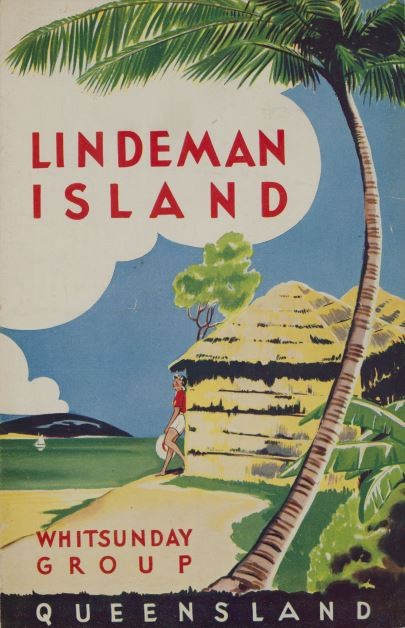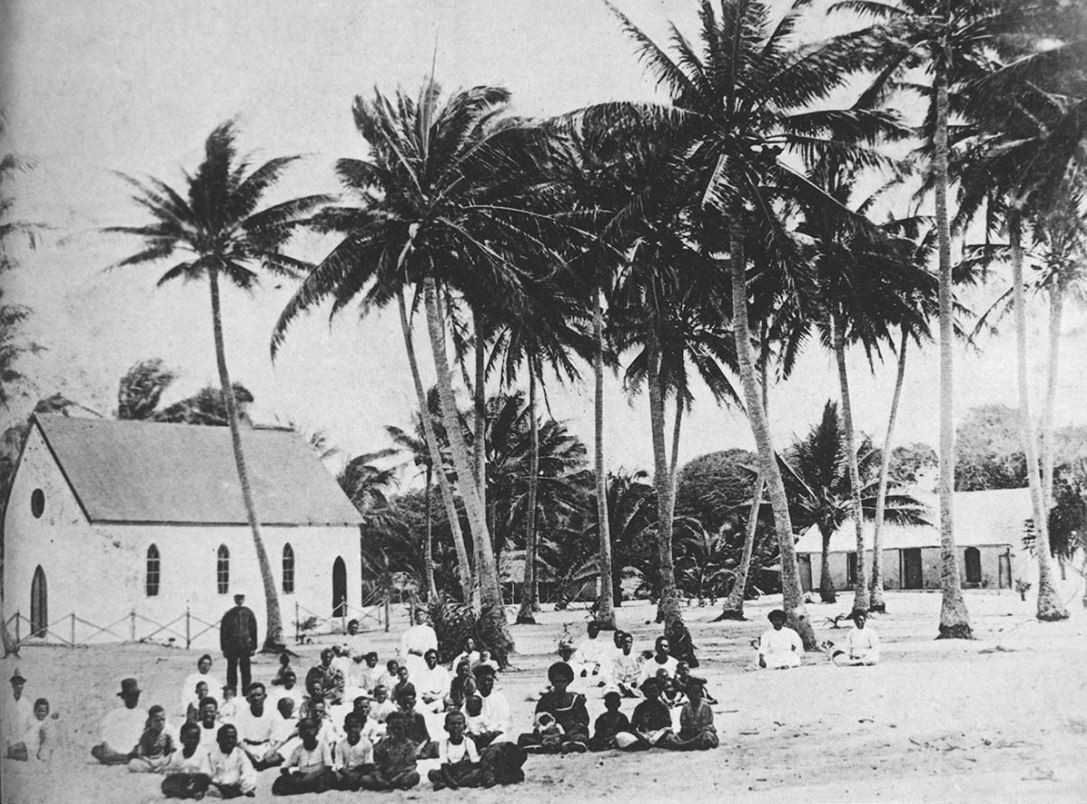From Moreton Bay in the south to the Torres Strait in the north, Queensland’s coastline is bejewelled with 1,995 islands.
What comes to mind when you think of an "island"? Is it a tropical, green idyll surrounded by calm azure waters? A new exhibition at State Library of Queensland looking at the history of five of Queensland’s islands, explores the idea that underneath the glittering exterior of our ideas of islands as tropical paradises, often lies a darker history that has been "hidden" from view.

Tourism brochure - Lindeman Island : Whitsunday Group, published by the Queensland Government Tourist Bureau, 193-?. John Oxley Library, State Library of Queensland
The convict settlement at Moreton Bay, once renowned for its cruel treatment of inmates, eventually granted prisoners a greater degree of trust under an "honour system" instigated by kindly superintendent Patrick Roche, who turned "the hellhole of the Pacific" into what was jokingly referred to as "the Monte Carlo of Moreton Bay".

Yorke Island (Masig), church and mission house, 1916. John Oxley Library, State Library of Queensland. Image 702692-19161104-0021
When young wife and mother Phyllis Ebbage was diagnosed with leprosy, neither her doctor nor her family told her, believing they were "protecting" her. Flown to Brisbane without bidding her daughters a proper farewell, she would not see them for another eight years. Phyllis spent thirteen years in the Peel Island Lazaret, held (as all patients were) by legislation of the day and not allowed to leave. When she was finally released, it was unclear whether she’d even had leprosy at all.
https://www.youtube.com/watch?v=58PEMWltFtM
When the Butchulla people on K’gari-Fraser Island and the Ngaro in the Whitsundays came into contact with Europeans, their island paradise and their way of life was ultimately destroyed by systematic removal and dispersal, disease and opium addiction. Queenslanders became alarmed at the disappearance of Aboriginal people on such a large scale and the government engaged local, self-styled anthropologist Archibald Meston to assess the situation. His report became the basis of "the Act", or The Aboriginal Protection and Restriction of the Sale of Opium Act 1897 which would give the government total control over every aspect of first nations’ peoples’ lives for the next 75 years.
In stark contrast is the experience of Erub (Darnley) Islanders, who were never dispossessed from their lands and who not only embraced the arrival of Christianity but also helped it to spread peacefully across the Torres Strait. Celebrated to this day as "The Coming of the Light", Torres Strait Islanders held on to their own languages, beliefs, traditions and culture through the Church allowing integration of some elements into their own into existing rituals and ceremonies.
https://www.youtube.com/watch?v=TMKkVtyPcY0
Islands: hidden histories of Queensland's islands will be on display at the State Library of Queensland in the Philip Bacon Heritage Gallery, level 4 from 30 June 2018 to 27 January 2019.
Anna Thurgood - Engagement Officer, State Library of Queensland
Comments
Your email address will not be published.
We welcome relevant, respectful comments.